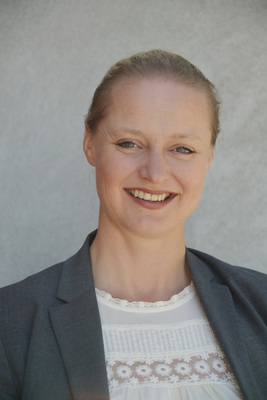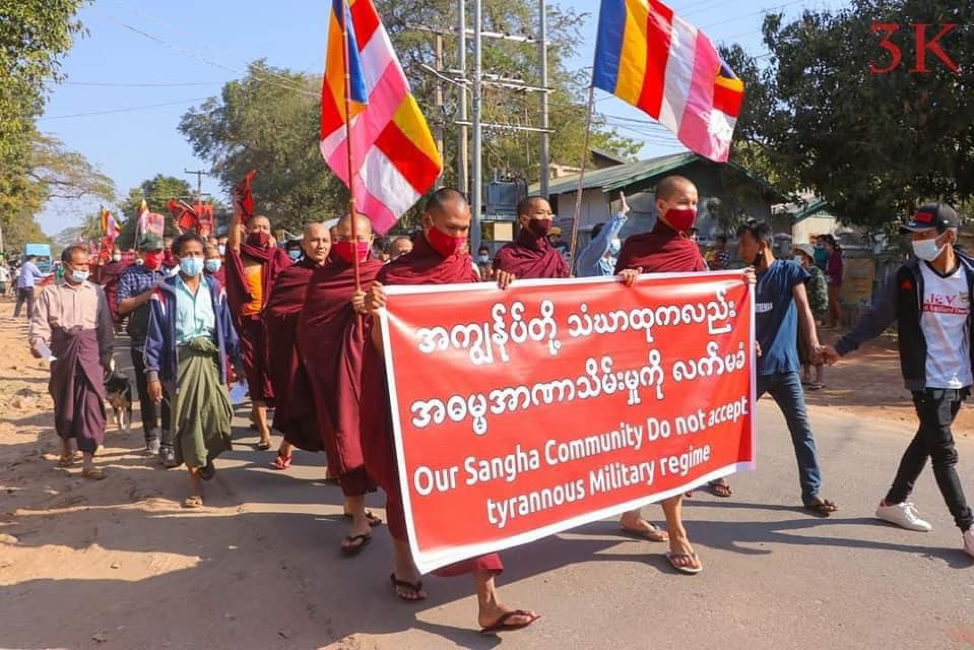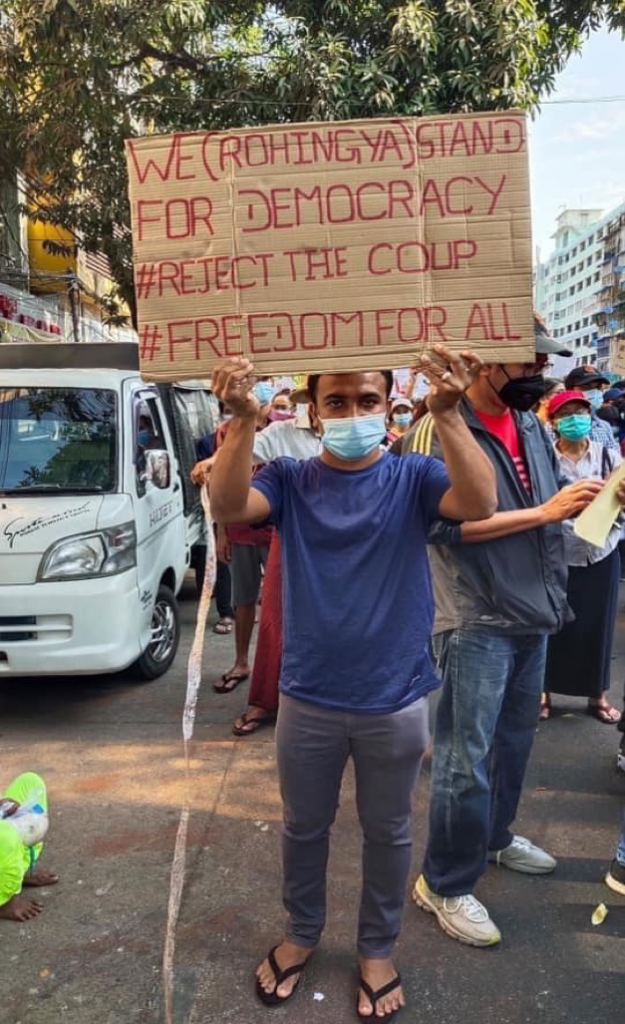As we witness thousands of Burmese taking to the streets to protest the recent military takeover, what are the religious dynamics that we need to bear in mind in order to more fully understand the present situation in Myanmar? How are the military and democracy activists utilizing religious ideas, institutions, and images? Looking ahead, what role are monks and other religious actors likely to play in fostering democratic norms and a more peaceful, inclusive Myanmar?
To help us think through these questions, Religion & Diplomacy editor Judd Birdsall reached out to two leading experts on religion and politics in Myanmar—Iselin Frydenlund and Susan Hayward. In 2019 Frydenlund and Hayward co-authored a policy report for the TPNRD on Religion, Secularism, and the Pursuit of Peace in Myanmar.
Iselin Frydenlund is Professor of Religious Studies at the Norwegian School of Theology, Religion, and Society. Susan Hayward and is a Fellow in Religion and Public Life at Harvard Divinity School and a Senior Advisor for religion and inclusive societies at the U.S. Institute of Peace.
Judd Birdsall: Susan, how did we get here? In your 2019 policy report you and Iselin discussed Buddhist protectionist and nationalist elements within Burmese society, the ‘race and religion’ laws, and the military’s actions against the Rohingya as barriers to peace and democracy. How did those issues and other religion-related issues factor into the lead up to the 2020 elections and subsequent coup?

Susan Hayward [credit: USIP]
Susan Hayward: Over the past five years there has been a fierce political competition between General Min Aung Hlaing (MAH), the head of the military and of the military’s political party the Union State and Development Party, and Aung San Suu Kyi (ASSK) and the opposition party the National League for Democracy (NLD). The coup is a reflection of that competition reaching a climax.
In 2010 when the military opened up to some civilian participation in government—but with its power firmly entrenched by the 2008 “discipline-flourishing democracy” constitution, which maintains critical levers of power under military control—it thought it could contain ASSK and the NLD’s influence and popularity and win favor with various constituencies throughout Myanmar. The November 2020 elections, which the NLD won in a landslide, showed the military that they would not win, at least not anytime soon, through the democratic process. Even ethnic groups, some of whom have expressed frustration with ASSK and the NLD in recent years, voted largely for the NLD instead of smaller ethnic political parties. Following the election, there were tense negotiations between the two leaders—or their people—to find some kind of a political deal, but those talks broke down days before the coup took place.
Turning to religious dimensions. First, it’s important we not overstate them. I won’t argue that it was religious factors that primarily led to the coup or that have fueled the resistance to it. That’s far from the case. But, as we seek to understand the full picture of what led to the coup, what’s going on now, and what will come, analyzing the religious dimension can illuminate a part of the picture.
In our 2019 paper, Iselin and I were looking at how religious issues might play out in the run-up to the November election. As we predicted, there wasn’t a particularly strong current of Buddhist nationalist monastic campaigning, as we’d seen in the 2015 elections. However, both MAH and ASSK sought to present themselves as righteous Buddhist leaders worthy to serve as a supreme leader—an image they have both sought to present throughout their rules. In Theravada Buddhist kingship models, the supreme ruler has an important responsibility to protect and promote Buddhism. The USDP tried again to accuse the NLD of being the “anti-religious” (read: anti-Buddhist) party, unable to fulfill that role. And ASSK, in her efforts to crackdown on Buddhist nationalist actors—like putting the notorious anti-Muslim monk Ashin Wirathu in jail—was also presenting herself as purifier of the Buddhist monastic community. This elite competition between MAH and ASSK is sometimes framed within, or at least colored by, these notions of righteous Buddhist leader.
We saw some of this play out in the run up to the coup as well. MAH consulted with the State Mahanayeke Council, the administrative body overseeing the Buddhist monastic community. According to anthropologist Ingrid Jordt, he also performed charitable giving at a pagoda associated with Burmese kings since the 13th century, a Buddhist ritual act that is meant to bring spiritual benefit to himself and the military as a whole, as well as to bestow religious legitimacy. Since the coup, he and other leaders have been visiting religious places—not just Buddhist sites—to do outreach. And the military ordered Shwedagon and some pagodas in Bagan to be open following COVID closures. In all of this, he is modeling himself as a Buddhist leader in line with the great and righteous kings of the past.
While anti-Rohingya sentiments didn’t particularly mark the election, neither had those sentiments seemed to dissipate a great deal. Or rather, it does not seem that more sympathy had arisen for the massacres Rohingya endured in the run up to the election. The NLD certainly did not run on a platform condemning the military for its violent excesses against the Rohingya. Butthis coup is possibly transforming some of those Buddhist and/or Bamar nationalist attitudes. There is a real sense of coming together that is happening on the streets, at least in these early days. Muslims, Hindus, Christians, LGBT, those of different ethnicities and constituencies have been out participating with clear identifiers of who they are. Even Rohingya have been protesting in Yangon holding signs identifying themselves as Rohingya, something I haven’t seen Rohingya do much before, likely out of fear of the antagonism they’d encounter. The movement is bringing different groups together in a way we haven’t seen in recent years, during a time when have been some clear tensions between groups—Buddhist and Muslim, ethnic groups and Bamar NLD leaders and ASSK. The military may have inadvertently succeeded in consolidating Myanmar’s diverse constituencies against it.
Judd Birdsall: Iselin, what are you seeing in terms of the varied response to the coup from within the Buddhist Sangha?

Iselin Frydenlund [credit: Norwegian School of Theology, Religion, and Society]
Iselin Frydenlund: First of all, I would like to say that the overall response from the monastic order—the Sangha—is one of condemnation of the coup and support to the massive popular protests. However, we also see complex dynamics at play where specific military-monastic networks are visible. In our 2019 paper we discussed the role of Buddhism in military ideology. As Susan mentioned, this is clearly demonstrated by the fact that General Min Aung Hlaing, together with other generals, performed Buddhist rituals in public religious places such as the Peace Pagoda in Nay Pi Taw after the coup. Pictures of their visit were distributed on military news networks. Thus, they are to be understood as part of a legitimizing strategy, with the intention of imbuing the coup with a specific “Buddhist quality.”
Also, it is to be noted that the military has over the last 30 years been cultivating specific monastic networks, such as with the famous Sitagu Sayadaw. He has remained silent during the coup, but has allowed other senior monks within his monastic “empire” to express a vague and “wait-and-see” statement. This statement is widely seen as implicit support to the coup. Many international actors have been critical of Sitagu Sayadaw in recent years, especially following his seeming blessing of the military actions against the Rohingya. However, it’s important to note that he remains popular in Myanmar for his sermons and community service work.
More explicit support from monks for the coup is found Buddhist nationalist associations such as the Patriotic Monk Association. In videos posted online we can observe how military personnel are providing logistical support to monks who partake in demonstrations in favor of the coup. These organizations are, however, small and represent a hardline position within the Sangha. Some of those participating in the activities accuse these pro-military monks of being “fake monks” planted by the military.
So far, the Buddha Dhamma Parahita Foundation (mostly known as the Ma Ba Tha)—which is a broad Buddhist nationalist social movement across the country—has not given any statements on the coup itself. It did, however, publish a statement in favor of the 2008 Constitution and the principle of national sovereignty only hours prior to the coup. This indicates support to the USDP and the military (against the NLD) in the days leading up to the coup. However, it is important to note that many Ma Ba Tha members and activists are against the coup, clearly indicating that a pro-Buddhist and nationalist position does not necessarily imply support to military rule. Or stated more clearly, for Ma Ba Tha members nationalism and democracy are combined. This point is not to be missed as similar dynamics are at play within the NLD itself: while working relentlessly for democratic change in Myanmar, the party also communicates a clear ethno-nationalist and pro-Buddhist ethos, which came into play during the 2017 Rohingya crisis and Aung San Suu Kyi’s statements to the International Court of Justice in the Hague in December 2019.
Returning to monastic statements against the coup, crystal clear condemnation of the coup has been expressed by high-ranking monasteries such as the Mahagandayone and the New Masoyein in Mandalay. Particularly the statement from Mahagandayone is of crucial importance I would argue, as this monastery is deeply respected for its non-political, spiritually-focused and ascetic profile. Monks from monasteries such as these are not likely to take to the streets, but due to their moral authority in the Buddhist community their messages to the people are heard.

Monks protesting against the military coup in Myanmar [credit: 3K Photography]
The Peace Sangha Union is a group of monks formed to show solidarity with the democratic protests from around the country and in diaspora. They have been posting regularly on social media images of monastic participation around the country, statements, and letters they have been delivering to international actors. We are also seeing the use of Buddhist symbols and rituals in the protests, from the turning-over-of-the-alms-bowl to symbolize condemnation and spiritual exile of the military to the offering of lovingkindess chants for the protestors.
Finally, other groups of monks have an explicit social activist profile and have been public critics of the military long before the coup. The most well-known among these are Myawaddy Sayadaw, Ashin Sobitha, and Shwe Nya War Sayadaw. All three were detained on the first day of the coup and are still in prison.
Birdsall: Susan, what are you seeing in terms of responses from other religious communities and their clergy?
Hayward: The images we’re seeing online of the protests illustrates how seemingly everyone is participating in this movement, and in doing so they are clearly proclaiming their identity – demonstrating that the movement is pluralistic and that it is seeking a federal democratic system in which all communities have rights. That is, the pluralism of the movement itself reflects the goal they seek.
Cardinal Charles Bo from the Catholic community has been very vocal in support of the protest movement, issuing statements, tweeting regularly, and celebrating the participation of all people and of Catholic clergy in particular. Catholic priests and nuns have been participating throughout the country, encouraged by a Bishops letter that called on Catholics to support nonviolent actions. Among Protestant Christians—largely Baptist—a slew of churches, seminaries, and organizations have signaled their support for the protests. The Myanmar Baptist Convention issued a statement. And again, Baptist clergy—male and female—have participated in street protests and coordinated regular prayer sessions in support of the movement.

A Rohingya man joins the protest against the coup.
One thing that has been striking to me has been to see so many Muslim participants, across all townships and multiple ethnic groups, including the Rohingya. Imams have been participating visibly. This is different from the past, when Muslim religious leaders have been much more reticent to engage in political activities as a result of their vulnerability. A statement was issued by a group of imams that quoted Qur’anic passages in support of justice, and stated support for the protest movement. Notably, Muslim business leaders have been less involved.
Hindus, Sikhs, and practitioners of indigenous nat practices have also been participating. There have been interfaith prayer services and groups mobilizing under interfaith banners. And, I’ve seen a lot of celebration across religious communities for the participation of other groups: Buddhists posting images of and celebrating the participation of imams, Christians applauding the many Buddhist monks and nuns on the street, etc. There is a lot of celebration and pride among protestors in having such broad diversity in the protests—both religious and ethnic.
It’s important to note that the youth have been the real leaders of the movement, not the older religious leaders. Notably, many clergy seem to be following the lead of the youth. This mimics what happened when anti-Muslim unrest began to break out in 2011/2012—it was the youth who were on the frontlines condemning it, with the religious leaders stepping up more slowly.
Birdsall: Iselin, you’ve been closely tracking the role of social media in response to the coup. What are you seeing and what are your thoughts on the role the big telecom companies and social media companies should play in a situation like this?
Frydenlund: The importance of social media has been massive. The coup was almost live streamed. Social media has been crucial for sharing information within Myanmar, but also in sharing information to the outside world. This has been of utmost importance for religious actors as well, including Buddhist monks. We also see that it has been crucial for organizing events, such as the civil disobedience movement and massive street demonstrations. Facebook is widely used in Myanmar, but Twitter seems to have increased its role since the coup days as a means of rapid circulation of news and reports from the protests across the country.
When the protests erupted, the military quickly initiated disruptions of the internet services across the country, particularly affecting telecom companies such as Telenor and Oredoo, but to a lesser extent the military-owned Mytel. People were then forced to buy Mytel sim cards, which provided access, but also implied higher risk. Full internet shutdowns have been occurring most nights.
The military launched a new cybersecurity law on February 11th. How the new law will be practiced is not clear, but activists expect a major crackdown on cyber activity, internet shut downs, and surveillance. Activists are now sharing information about cyber security, VPN connections, and apps that do not require internet for communication.
The role of social media for the civil disobedience movement and for popular resistance raisesimportant questions about the responsibility of big tech companies in situations of massive violence or military coups. On the one hand, cracking down on hate speech might be crucial, such as in the case of the violence against the Rohingya in 2017. On the other hand, Facebook has received massive criticism for shutting down the sites of Ethnic Armed Organizations, which many believe have very legitimate claims and their silencing plays into the military’s hands. Furthermore, the situation in Myanmar also calls upon tech and telecom companies such as Telenor to think through their social corporate responsibilities. It is important to carefully consider the ethical dilemmas here: on the one hand by closing down the internet, they may be complicit in military rule. On the other hand, leaving the country might force people to rely on military tech services that are generally considered to be less transparent and more prone to surveillance than Telenor.
Birdsall: So many of the elements of the crisis in Myanmar have eerie echoes of what we’ve recently experienced in the U.S.: allegations of voter fraud, calls the military step in, nationalist movements with strong religious inflections. Susan, what lessons can we draw about the norms and institutions of democracy and the role of religious communities in fostering democracy?
Hayward: Yes, you can’t help but wonder if the military was taking a page from Trump in alleging election fraud to undermine and overturn the November election results. The military leaders are, like Trump and some of his supporters, also portraying themselves as the true protectors of democracy by investigating these election fraud allegations, and so seeking to save the country.
But like you said, there are broader resonances too. First, in how race and religion are entangled. The violent nationalist extremists in America are seeking to defend white Christian supremacy in the country. They see those of other races and religions as threats to the country (even when those races and religions have been present since the founding of the country). Trump presented himself as a defender of Christianity and whiteness—his photo-op with the Bible in front of a church during a time of protests in support of Black lives was a bald-faced message of white Christian defense. And that goal took on a sacred quality in the sense that short-term violations of democratic norms might be necessary to achieve the larger goal of protecting the White Christian purity of the nation.
Similar mentalities and dynamics exist in Myanmar, with respect to Bamar Buddhist supremacy. Remember that MaBaTha, the monastic activist group, was created in order to defend both race and religion – that’s in its very name. And the opposition—NLD and ASSK—didn’t always argue or behave counter to that assumption about the Bamar Buddhist identity of the nation. In fact, her defense of the Rohingya genocide played into that narrative, as she acted as an ethno-nationalist defender of a Bamar Buddhist nation.
In both countries, the opposition is diverse, and, arguably has “more” religious actor/clergy participation – both in terms of type and number. But the opposition gets painted as the anti-religious (meaning anti- Buddhist or anti-Christian, respectively) movement by the ethno-religious nationalists. For this reason, in both countries the participation of religious actors in opposition movements who push back against the “religious” narratives justifying discrimination and authoritarianism is critical. And I don’t just mean by using words. Their very participation in the protests pushes back against these narratives. This is why, I suspect, I see so many young people on social media sharing photos of diverse clergy participating—and these images get a lot of likes. Their participation also lends moral credibility to the movement, displays clearly the religious diversity the movement seeks to embrace and celebrate, and signals to their followers an encouragement to participate. I think Cardinal Bo’s immediate and consistent messages inspire the significant presence of Catholic priests and nuns in protests throughout the country.
But their words also matter. Many clergy are releasing statements where they align democratic norms with religious principles, and describe oppressive military rule as un-religious. The Myanmar Baptist Convention rejected “oppressive military rule that is against the teachings of the Bible,” for example. The International Network of Engaged Buddhists’ statement of solidarity spoke of right governance being in line with Buddhist principles of right aspiration and concentration—steps on the eightfold path. As noted earlier, a statement put out by imams instructed Muslims to participate in nonviolent protests, and quoted from the Qur’an. These challenge attempts to portray draconian political efforts like the military coup as being about religious protection.
But also important to note what Iselin said, that there are religious clergy participating who support democracy and the NLD, but nonetheless may harbor some anti-liberal values. They may believe that the leader and the state must play a meaningful role in protecting and promoting Buddhism, and that minorities must show this same deference to the Buddhist role of the state. The pro-democracy movement in Myanmar has historically been very Buddhist—very Bamar Buddhist dominated.
Birdsall: A final question for both of you. Looking ahead, what dynamics should we be watching as it relates to religion and politics in Myanmar?
Hayward: The military will no doubt try to create divisions within the movement—between ethnic and religious groups, generations, those with different demands. I will be watching to see if the social cohesion across identity differences we are now seeing can be sustained for what will inevitably be a long haul. I am also curious about whether and how condemnation for the military’s role in the Rohingya crisis will grow, with support offered by larger sections of the Myanmar public for Gambia’s prosecution of Min Aung Hlaing in The Hague.
Frydenlund: What moves will the military take to “purify” the sangha in self-serving ways? They could use the penal code and emergency laws, as they have done in the past, such as by issuing charges of defamation and “religious offense.”They may move to arrest more monks involved in anti-military activities.
Also, we can expect the military to apply specific state laws for Sangha regulation, such as the State Sangha Act from 1990 to expel cross-sectarian democracy associations like the Peace Sangha Union. There will be a complex picture of cross-cutting alliances as some ethnic parties, like the Arakan National Party, have made alliances with the military. Another risk is that pro-democracy groups in the Sangha will be portrayed as “un-national” and as “traitors” if they associate too closely with foreign groups and actors. We also see today that the military crackdown on a wider group of religious specialists, such as the fortune teller Linn Nyoe Tara because he provided people with magical rituals for a better government. He was charged with defamation of the state.